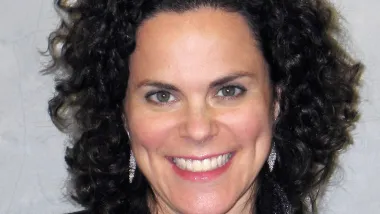I have to admit, listening to Peter Lovenheim talk about his book “In the Neighborhood, The Search for Community on an American Street, One Sleepover at a Time”, spiked my planner’s radar. In his novel, the journalist, quite intentionally, well, the title is self-explanatory isn’t it? It sounded a bit hokey and contrived at first, as did the interview. Lovenheim explained that the only way to truly get to know someone and develop a real sense of intimacy and bond was to sleep in their home and shadow them for the day. But the real story is about the loss of intimacy and comfort among neighbors.
I have to admit, listening to Peter Lovenheim talk about his book "In the Neighborhood, The Search for Community on an American Street, One Sleepover at a Time", spiked my planner's radar. In his novel, the journalist, quite intentionally, well, the title is self-explanatory isn't it? It sounded a bit hokey and contrived at first, as did the interview. Lovenheim explained that the only way to truly get to know someone and develop a real sense of intimacy and bond was to sleep in their home and shadow them for the day. But the real story is about the loss of intimacy and comfort among neighbors. Lovenheim's quest to understand why people who share the same street are unable to share anything else about themselves is actually a reflection of how our neighborhoods are designed and laid out.
A fellow blogger last month wrote that drawing ability was not a prerequisite for being a planner. But understanding spatial relationships certainly is. Lovenheim's neighborhood is a picturesque curving and undulating street, with stately homes which are set far back from the street. The house on the hill design had decreased opportunity for neighbors to casually meet and interact so Lovenheim quite deliberately befriended a handful of people, and matched them together to form a traditional unit of neighbors who could depend on each other through challenging times, what sociologists and planners referto as creating social capital.
What was most interesting to me was that almost all of the neighbors on Lovenheim's street had an intense need to be part of a community and a social network, but they didn't have the facilities to achieve it. One neighbor observed that public spaces have largely been privatized into commercial spaces. Think about the coffee shop, king Starbucks, bookstores. These are little self-contained units with a small entry fee. Another neighbor contrasted American neighborhoods to African tribal villages whose homes are traditionally organized around acentral space out of a primal need for survival. She observed that American neighborhoods are designed for privacy to fuel the prevailing ideology that we can survive alone. And then she suggests the antidote to this landscape of isolation parks! Brilliant.
We obviously can't retrofit our neighborhoods to the tribal village model, or wait for a creative type to take it upon himself to bring the neighbors together one sleepover at a time, but we can introduce more central spaces, parks, playgrounds, community gardens to our neighborhoods.

Planetizen Federal Action Tracker
A weekly monitor of how Trump’s orders and actions are impacting planners and planning in America.

Chicago’s Ghost Rails
Just beneath the surface of the modern city lie the remnants of its expansive early 20th-century streetcar system.

Amtrak Cutting Jobs, Funding to High-Speed Rail
The agency plans to cut 10 percent of its workforce and has confirmed it will not fund new high-speed rail projects.

Ohio Forces Data Centers to Prepay for Power
Utilities are calling on states to hold data center operators responsible for new energy demands to prevent leaving consumers on the hook for their bills.

MARTA CEO Steps Down Amid Citizenship Concerns
MARTA’s board announced Thursday that its chief, who is from Canada, is resigning due to questions about his immigration status.

Silicon Valley ‘Bike Superhighway’ Awarded $14M State Grant
A Caltrans grant brings the 10-mile Central Bikeway project connecting Santa Clara and East San Jose closer to fruition.
Urban Design for Planners 1: Software Tools
This six-course series explores essential urban design concepts using open source software and equips planners with the tools they need to participate fully in the urban design process.
Planning for Universal Design
Learn the tools for implementing Universal Design in planning regulations.
Caltrans
City of Fort Worth
Mpact (founded as Rail~Volution)
City of Camden Redevelopment Agency
City of Astoria
City of Portland
City of Laramie






























